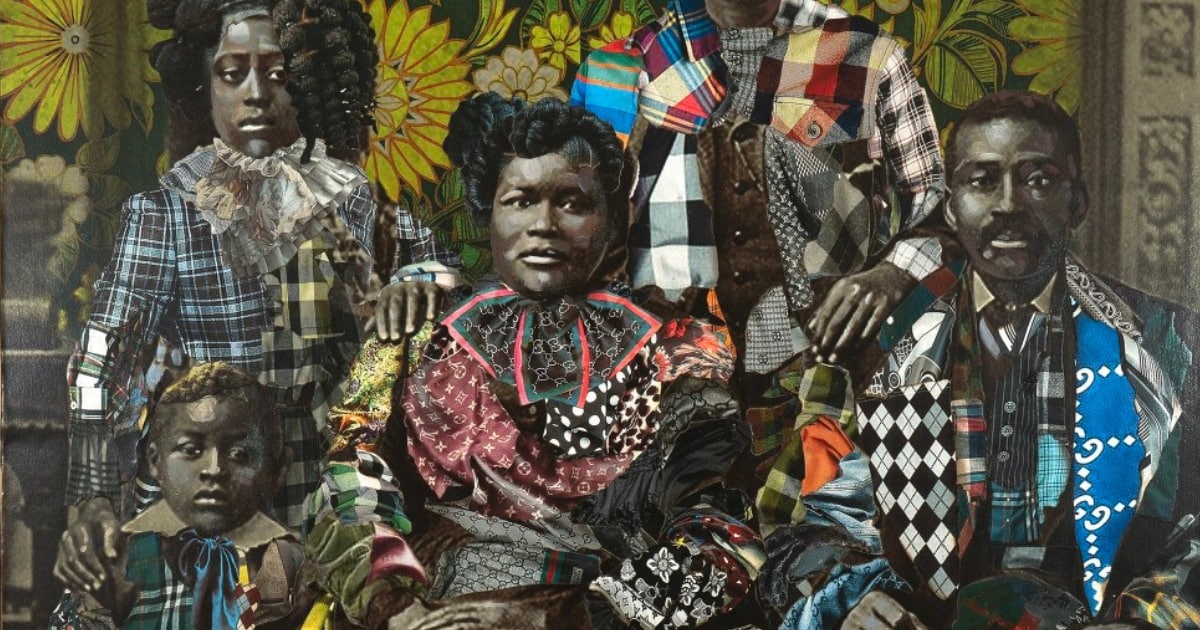Um Al Dhabaab (Mother of Fog)
2022 - Film & Video (Film & Video)
29:45 minutes
Farah Al Qasimi
Um Al Dhabaab (Mother of Fog) by Farah Al Qasimi addresses the myth of Al Qasimi tribe-instigated piracy in the Gulf, perpetuated by the British Empire and upheld by contemporary western academia. This narrative is contested through a fictional retelling of the 1819 siege of Al Dhayah fort and the subsequent Pax Britannica treaty that solidified Britain’s military presence in the Trucial States. Relayed across various locations and times in Ras Al Khaimah through the perspectives of an ancient jinn, the ghost of an Al Qasimi pirate, two RAK-based sisters, a Jack Sparrow impersonator and ship captain, and an 1819 British naval officer, the film challenges Western-centric historiographies of the Gulf and the lingering imperialist interests at play across Asia’s modern-day trade hubs. The film also grounds this conflict of portrayal in the twenty-first century by drawing parallels to pirate video games and movies in contemporary culture. The film was co-produced by Sharjah Art Foundation and KADIST, and premiered at the Sharjah Biennial 15: Thinking Historically in the Present opening in February 2023.
Working primarily with photography, video and performance, Farah Al Qasimi examines postcolonial structures of power, gender, and taste in the Gulf Arab states. Dividing her time between Dubai and New York, Al Qasimi has integrated her practice as a social critique and observation of the layered aspects of each place indirectly. Through her bold and vibrant photographs, she explores the unspoken social norms and values embedded in a place, a moment, or an object. Creating work that confront commonplace notions of figurative photography and portraiture, Al Qasimi’s works challenge the viewer to consider their own understanding of reality, aspiration, individuality, and the reflected image.
Colors:
Related works sharing similar palette

© » ART & OBJECT
10 Standout Works from the 2023 Hammer Biennial | Art & Object Skip to main content Subscribe to our free e-letter! Webform Your Email Address Role Art Collector/Enthusiast Artist Art World Professional Academic Country USA Afghanistan Albania Algeria American Samoa Andorra Angola Anguilla Antarctica Antigua & Barbuda Argentina Armenia Aruba Ascension Island Australia Austria Azerbaijan Bahamas Bahrain Bangladesh Barbados Belarus Belgium Belize Benin Bermuda Bhutan Bolivia Bosnia & Herzegovina Botswana Bouvet Island Brazil British Indian Ocean Territory British Virgin Islands Brunei Bulgaria Burkina Faso Burundi Cambodia Cameroon Canada Canary Islands Cape Verde Caribbean Netherlands Cayman Islands Central African Republic Ceuta & Melilla Chad Chile China Christmas Island Clipperton Island Cocos (Keeling) Islands Colombia Comoros Congo - Brazzaville Congo - Kinshasa Cook Islands Costa Rica Croatia Cuba Curaçao Cyprus Czechia Côte d’Ivoire Denmark Diego Garcia Djibouti Dominica Dominican Republic Ecuador Egypt El Salvador Equatorial Guinea Eritrea Estonia Eswatini Ethiopia Falkland Islands Faroe Islands Fiji Finland France French Guiana French Polynesia French Southern Territories Gabon Gambia Georgia Germany Ghana Gibraltar Greece Greenland Grenada Guadeloupe Guam Guatemala Guernsey Guinea Guinea-Bissau Guyana Haiti Heard & McDonald Islands Honduras Hong Kong SAR China Hungary Iceland India Indonesia Iran Iraq Ireland Isle of Man Israel Italy Jamaica Japan Jersey Jordan Kazakhstan Kenya Kiribati Kosovo Kuwait Kyrgyzstan Laos Latvia Lebanon Lesotho Liberia Libya Liechtenstein Lithuania Luxembourg Macao SAR China Madagascar Malawi Malaysia Maldives Mali Malta Marshall Islands Martinique Mauritania Mauritius Mayotte Mexico Micronesia Moldova Monaco Mongolia Montenegro Montserrat Morocco Mozambique Myanmar (Burma) Namibia Nauru Nepal Netherlands Netherlands Antilles New Caledonia New Zealand Nicaragua Niger Nigeria Niue Norfolk Island Northern Mariana Islands North Korea North Macedonia Norway Oman Outlying Oceania Pakistan Palau Palestinian Territories Panama Papua New Guinea Paraguay Peru Philippines Pitcairn Islands Poland Portugal Puerto Rico Qatar Romania Russia Rwanda Réunion Samoa San Marino Saudi Arabia Senegal Serbia Seychelles Sierra Leone Singapore Sint Maarten Slovakia Slovenia Solomon Islands Somalia South Africa South Georgia & South Sandwich Islands South Korea South Sudan Spain Sri Lanka St...

© » KADIST
Woto Wibowo
2011Vertical Horizon by Wito Wibowo addresses a media scandal in 2010 that took over the cultural milieu of Indonesia...

© » KADIST
Rossella Biscotti
2014Rossella Biscotti’s “10×10” series investigates the relationship between demographics, data processing, textile manufacturing and social structure...

© » KADIST
Tarek Atoui
2017For The Reverse Sessions , the artist reversed the order in which instruments are usually created, taking the sounds of a collection of ethnic musical instruments from The Dahlem Museum as the starting point...

© » ARTREPORT
Life and Death Explored At Art Stage Singapore – Art Report News ARTISTS Artist Highlights Artist Interviews Studio Visit VIDEOS ART+ Community Listicles No Result View All Result News ARTISTS Artist Highlights Artist Interviews Studio Visit VIDEOS ART+ Community Listicles No Result View All Result No Result View All Result Life and Death Explored At Art Stage Singapore by Christina Lee Jan 25, 2016 in NEWS 0 Portrait, Nunzio Paci...

© » KADIST
Kelly Sinnapah Mary
2021Notebook 10 , l ‘enfance de sanbras (The Childhood of Sanbras) series by Kelly Sinnapah Mary is a sequel to an earlier series by the artist titled Cahier d’un non retour au pays natal (2015)...

© » KADIST
In conversation with Nataša Petrešin-Bachelez Together they will talk about Marwa Arsanios’ last video “ Falling is not collapsing, falling is extending “, 2016, presented recently at the Hammer Museum (Los Angeles), that looks into the garbage crisis in Beirut and the city’s recent real estate boom...

© » KADIST
L’exigence de la saudade Curated by Zasha Colah and Sumesh Sharma, Clark House Initiative, Bombay With: Padmini Chettur, Prajakta Potnis and Zamthingla Ruivah And the participation of: Nalini Malani, Krishna Reddy, Jean Bhownagary, Maarten Visser Intervention in the public space by: Justin Ponmany, Prabhakar Pachpute The exhibition brings together three artists from distant geographies within India – Padmini Chettur, a contemporary dancer, Prajakta Potnis, a visual artist, and Zamthingla Ruivah, a master weaver, whose works are conceptually engaged with remnant cultural forms, not as endangered traditions, rather to reinvent them in the present...

© » KADIST
Yoshinori Niwa
2011Yoshinori Niwa’s investigation into the monetary system and material goods is witnessed across a range of his works...











